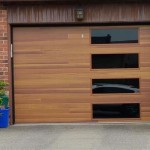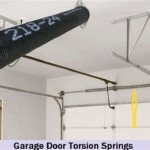Creating A Functional And Stylish Garage Workbench Design
A well-designed garage workbench is more than just a flat surface; it is the nucleus of productivity for DIY enthusiasts, hobbyists, and professionals alike. It serves as a dedicated space for tackling projects, organizing tools, and bringing creative visions to life. Creating a workbench that is both functional and stylish requires careful consideration of several key factors, including space availability, project needs, ergonomic considerations, and aesthetic preferences. This article explores the essential steps involved in designing and constructing a garage workbench that is tailored to individual requirements, promoting efficiency and enhancing the overall garage environment.
Understanding Space Constraints and Project Requirements
Before embarking on the workbench design, a thorough assessment of available space within the garage is crucial. Measure the designated area, considering both length and width, as well as vertical clearance. Account for obstructions such as garage doors, support beams, and existing storage structures. Space limitations will significantly influence the overall dimensions and configuration of the workbench. Smaller garages may necessitate a compact, wall-mounted, or foldable workbench design to maximize floor space utilization. Conversely, larger garages may accommodate more expansive workbench setups with multiple work surfaces and integrated storage solutions.
Furthermore, it is imperative to define the primary types of projects that will be undertaken on the workbench. This assessment will dictate the required work surface area, weight capacity, and specialized features. For instance, woodworking projects may demand a large, sturdy workbench capable of withstanding significant pressure and equipped with vises and clamping systems. Automotive repairs may necessitate a workbench with a durable, chemical-resistant surface and ample storage for tools and spare parts. Electronics assembly may benefit from a static-dissipative workbench with built-in lighting and component organizers. Defining project requirements early in the design process ensures that the workbench is adequately equipped to handle the intended tasks.
Consideration should also be given to the frequency and intensity of workbench usage. A hobbyist who occasionally engages in small-scale projects may opt for a more basic workbench design, while a professional who relies on the workbench daily will require a more robust and ergonomically optimized setup.
Optimizing Functionality Through Ergonomic Design and Storage Solutions
Ergonomics plays a vital role in maximizing productivity and minimizing physical strain during workbench usage. The height of the workbench should be tailored to the user's height and the type of tasks being performed. A workbench that is too low will result in back strain, while one that is too high will cause shoulder and neck discomfort. A general guideline is to set the workbench height at a level that allows the user to comfortably work with their elbows bent at a 90-degree angle. Adjustable-height workbenches offer versatility for different users and project requirements.
The workbench surface should be smooth, durable, and easy to clean. Common materials include solid wood, plywood, MDF (medium-density fiberboard), and laminate. Solid wood offers excellent strength and durability but can be more expensive. Plywood provides a good balance of strength and cost-effectiveness. MDF is a smooth, stable material that is ideal for paint or laminate finishes. Laminate surfaces are resistant to scratches, stains, and chemicals, making them suitable for demanding applications.
Effective storage solutions are essential for maintaining a well-organized and efficient workbench. Integrated storage options can include drawers, shelves, cabinets, pegboards, and tool racks. Drawers are ideal for storing small tools, hardware, and accessories. Shelves provide storage for larger items and materials. Cabinets offer enclosed storage for valuable tools and equipment. Pegboards allow for easy access to frequently used tools. Tool racks provide dedicated storage for hand tools and power tools.
Consider the placement and accessibility of storage solutions. Position frequently used tools and materials within easy reach, while less frequently used items can be stored in less accessible locations. Utilize vertical space by installing shelves and cabinets above the workbench. Implement a labeling system to clearly identify the contents of drawers, shelves, and cabinets. A well-organized workbench promotes efficiency and reduces the time spent searching for tools and materials.
Furthermore, incorporate features that enhance functionality, such as built-in power outlets, lighting fixtures, and ventilation systems. Power outlets provide convenient access to electricity for power tools and charging devices. Overhead lighting fixtures ensure adequate illumination of the work surface. Ventilation systems are crucial for removing dust, fumes, and other airborne particles.
Integrating Style and Aesthetics into the Workbench Design
While functionality is paramount, the aesthetic appearance of the workbench should not be overlooked. A stylish workbench can enhance the overall garage environment and contribute to a more enjoyable and productive work space. Consider the color scheme, materials, and overall design to create a visually appealing workbench that complements the existing garage décor. A cohesive design can transform a utilitarian space into a more inspiring and inviting area.
Choose a color palette that is consistent with the rest of the garage. Neutral colors, such as gray, white, and beige, provide a clean and versatile backdrop that can be easily accented with pops of color. Alternatively, bold colors can be used to create a more dynamic and energetic workspace. Consider the psychological effects of different colors when making your selection. Blue and green are often associated with calmness and focus, while red and orange can stimulate energy and creativity.
The selection of materials can also contribute to the overall aesthetic of the workbench. Solid wood workbenches can impart a sense of warmth and craftsmanship, while metal workbenches can convey a more industrial or modern aesthetic. Consider the texture and finish of the materials. A smooth, polished surface can create a sleek and contemporary look, while a rough, textured surface can add character and visual interest.
Pay attention to the details, such as the hardware, trim, and accessories. Choose hardware that complements the overall design and provides a cohesive look. Add trim to the edges of the workbench to create a finished and professional appearance. Incorporate decorative elements, such as plants, artwork, or personalized items, to add personality and character to the workspace.
Lighting plays a crucial role in both functionality and aesthetics. In addition to overhead lighting, consider adding task lighting to illuminate specific areas of the workbench. LED strip lights, under-cabinet lights, and adjustable desk lamps can provide focused illumination for detailed work. Choose lighting fixtures that complement the overall design and provide adequate brightness and color temperature.
Proper cable management is essential for maintaining a clean and organized workspace. Utilize cable trays, zip ties, and cord organizers to keep wires and cables neatly arranged and out of the way. This not only improves the aesthetic appearance of the workbench but also reduces the risk of tripping hazards and electrical accidents.
Ultimately, the goal is to create a workbench that is not only functional and efficient but also visually appealing and conducive to creativity and productivity. By carefully considering space constraints, project requirements, ergonomic considerations, storage solutions, and aesthetic preferences, it is possible to design and construct a garage workbench that meets individual needs and enhances the overall garage environment.

14 Super Simple Workbenches You Can Build The Family Handyman

How To Build The Ultimate Diy Garage Workbench Free Plans

Build A Basic Workbench Tylynn M

How To Build A Rolling Workbench Follow This Simple Diy Plans

11 Diy Workbench Ideas For Your Garage Or Office Simplified Building

How To Build A Diy Workbench Super Simple 50 Bench

The 10 Best Garage Workbench Builds

How To Build A Rolling Workbench Follow This Simple Diy Plans

Mobile Workbench With Table Saw Tylynn M

Gap
Related Posts








